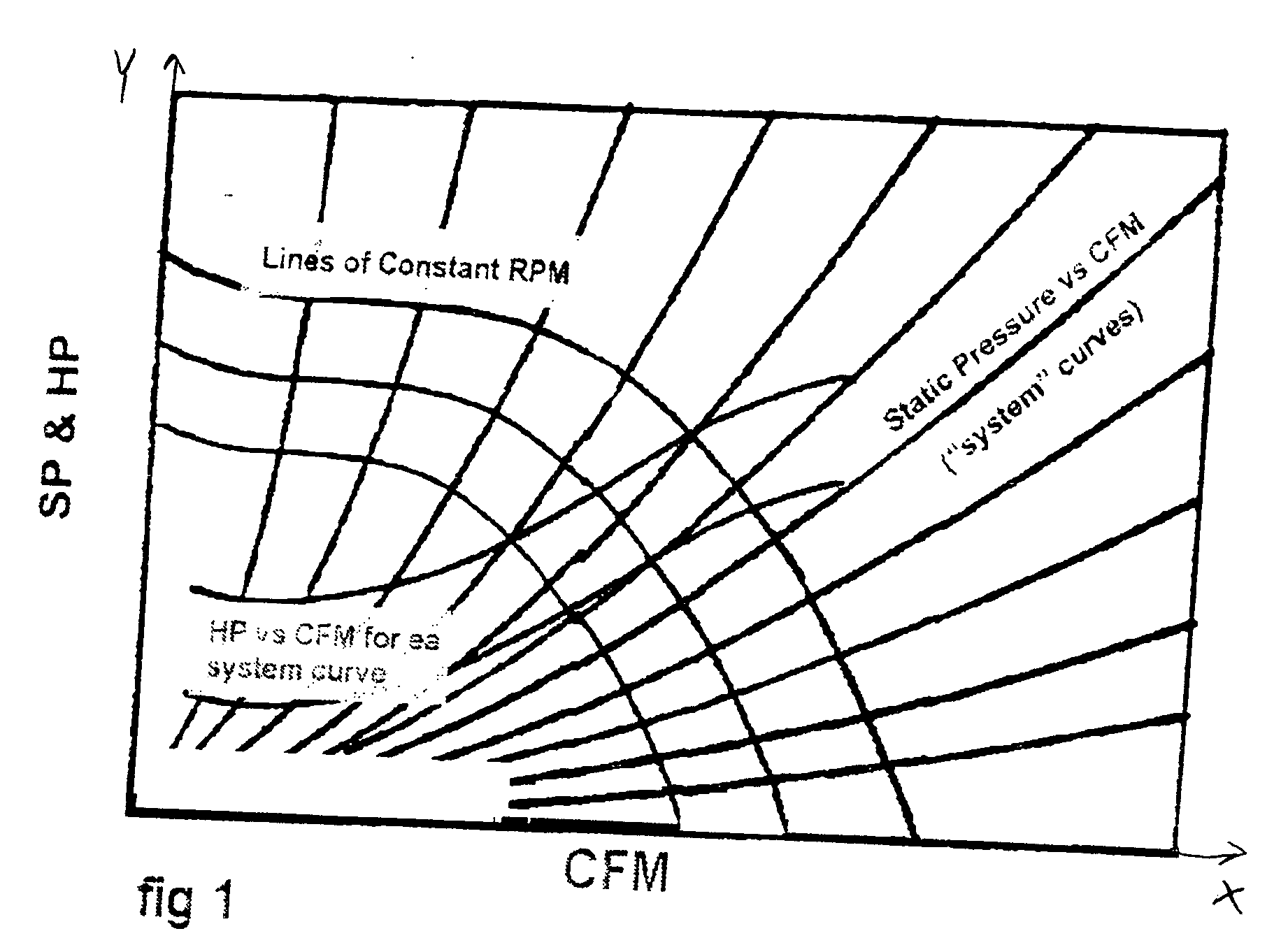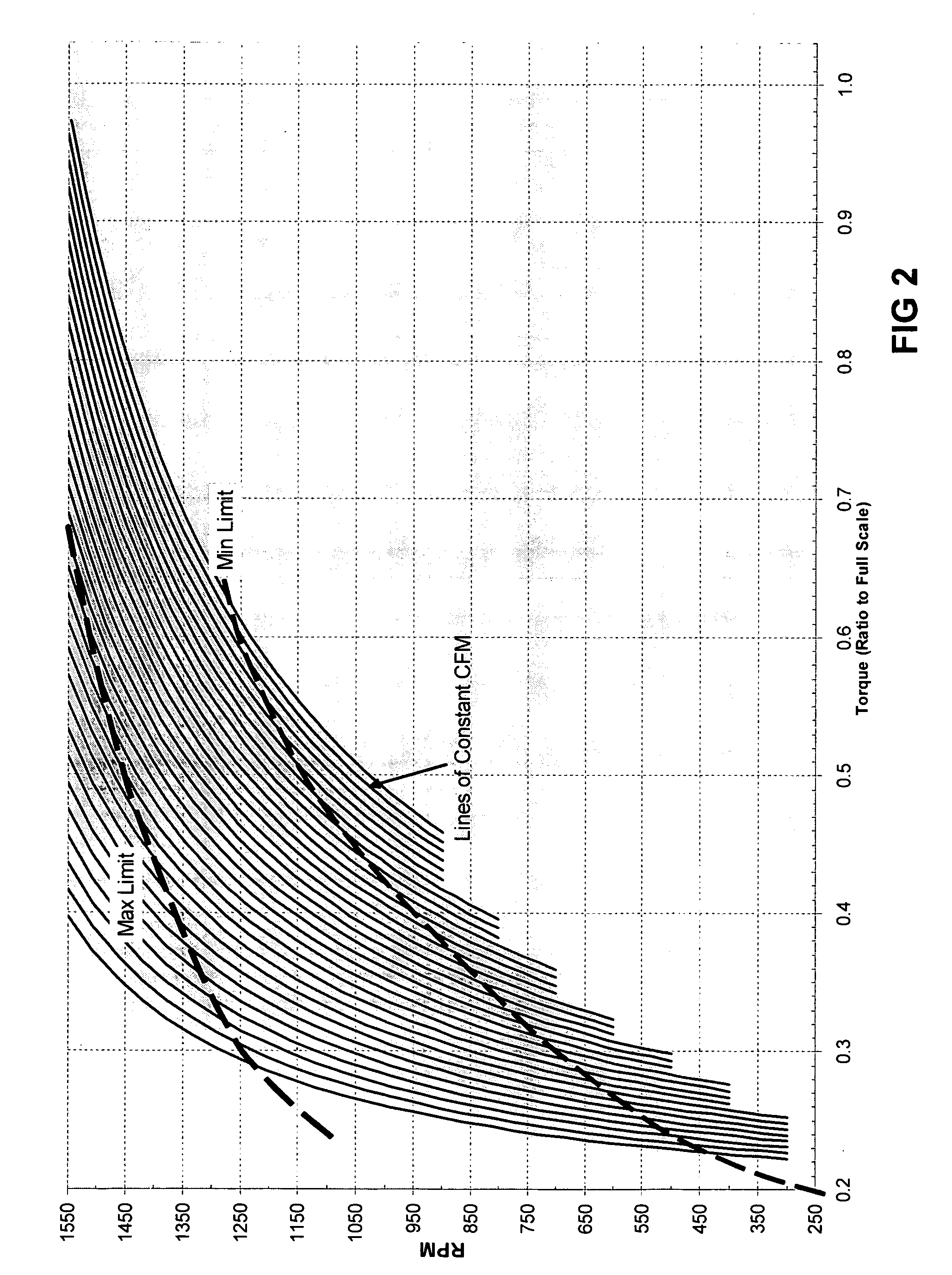Air delivery system and method
a technology of air delivery system and air delivery method, which is applied in the direction of efficient regulation technology, mechanical equipment, machines/engines, etc., can solve the problems of complex computation and significant processing resources, and the derived mathematical model of one blower or fan cannot produce controlled cfm representations for all blower geometries, sizes, and air conditioning systems
- Summary
- Abstract
- Description
- Claims
- Application Information
AI Technical Summary
Benefits of technology
Problems solved by technology
Method used
Image
Examples
Embodiment Construction
[0028]FIG. 1 is a graphical representation of a plurality of rates of air flow (CFMs-cubic feet per minute) based upon speed and horsepower of a motor within an existing air conditioning system. FIG. 1 (Prior Art) is a graphical representation of a fan curve, or air flow continuum, onto which, for clarification, is shown a series of constant pressure and RPM curves which define airflow and power. Anywhere within this continuum and, not only as described on the example curves themselves, a plurality of rates of air flow (CFM-cubic feet per minute) based upon speed and horsepower of a motor within an existing air conditioning system can be determined. To develop a mathematical model to produce a specific airflow performance in a system, a blower's specified performance data in an air conditioning system and its motor characteristics are measured and quantified. Specifically, the blower's airflow, and the motor's speed and torque are measured over a range of restriction (pressure) to p...
PUM
 Login to View More
Login to View More Abstract
Description
Claims
Application Information
 Login to View More
Login to View More - R&D
- Intellectual Property
- Life Sciences
- Materials
- Tech Scout
- Unparalleled Data Quality
- Higher Quality Content
- 60% Fewer Hallucinations
Browse by: Latest US Patents, China's latest patents, Technical Efficacy Thesaurus, Application Domain, Technology Topic, Popular Technical Reports.
© 2025 PatSnap. All rights reserved.Legal|Privacy policy|Modern Slavery Act Transparency Statement|Sitemap|About US| Contact US: help@patsnap.com



